#kaiser wilhelm i
Explore tagged Tumblr posts
Text

Hohenzoller and their famous “father-son”/“ruler-heir” conflicts
#yes I know that the relationship between Wilhelm I Friedrich III and then Wilhelm II weren’t great either#but Friedrich Wilhelm III and Luise kinda managed to at least raise their kids happy and full with love#friedrich wilhelm iii#frederick william iii#frederick the great#old fritz#friedrich der große#friedrich wilhelm i#Friedrich Wilhelm II#Friedrich Wilhelm iv#kaiser wilhelm i#history#prussia#history memes#prussian memes#hohenzollers and their dads man#hohenzollern
169 notes
·
View notes
Text

17 notes
·
View notes
Text
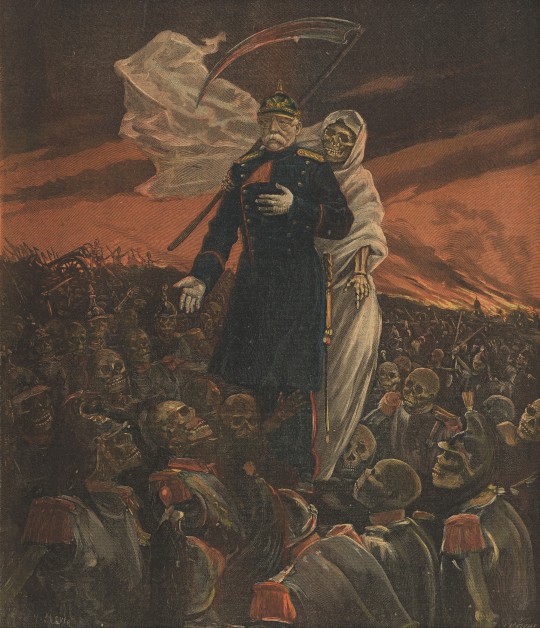
#art#vintage#illustration#allegory#henri meyer#Fortune Louis Méaulle#allegory of war#propaganda art#kaiser wilhelm i
110 notes
·
View notes
Text


Who wants to be the Bismarck to my Kaiser Wilhelm I? Who wants to be the Philipp zu Eulenburg to my Kaiser Wilhelm II?
(Platonic of course)
#kaiser wilhelm ii#kaiser wilhelm i#otto von bismarck#eulenburg#who wants to be…#platonic#friendship
2 notes
·
View notes
Text

#kaiser wilhelm i#wilhelm i#wilhelm the great#imperial germany#german empire#german monarchy#monarchy#prussian royal family
9 notes
·
View notes
Text

Reise nach Minden (Westfalen)
13.6. - 16.6.2025
Fotoauswahl mit "Black Layer" von der Porta Westfalica mit dem Kaiser-Wilhelm-Denkmal (Bauzeit 1892-96) über historische Gebäude in Minden sowie dem beeindruckenden Wasserstraßenkreuz (Mittellandkanal und Weser).
Das weltgrößte Wasserstraßenkreuz wurde bereits 1911-14 mit einer gewaltigen Brücke errichtet. Um mehr Schiffsverkehr zu ermöglichen, fand 1998 die Fertigstellung einer etwas breiteren 2. Wasserspur statt. Der Mittellandkanal wird oberhalb der Weser geführt




Dr. Andreas U. Korn, 17.06.2025
+ + +
0 notes
Text
The German Army in World War I








During World War I, the German Army—formally known as the Deutsches Heer—entered the conflict as one of the most modern and disciplined forces in Europe. Germany’s military strategy at the war’s outset was built around the Schlieffen Plan, crafted by General Alfred von Schlieffen in 1905. The plan aimed to prevent a two-front war by quickly defeating France in the west through a massive flanking movement that would sweep through neutral Belgium and encircle Paris, before turning to face Russia in the east, whose mobilization was expected to be slower. However, the execution of the plan was flawed. Belgium's resistance, British involvement after the violation of Belgian neutrality, and unexpectedly rapid Russian mobilization forced Germany to divert troops eastward, contributing to the failure of the plan and the start of prolonged trench warfare on both fronts.
German soldiers, referred to as Landser, began the war wearing traditional uniforms that reflected 19th-century styles. Their standard issue included the feldgrau (field-grey) wool tunic and trousers, which were initially intended to offer some degree of camouflage. A distinctive feature of the early war uniform was the Pickelhaube, a leather spiked helmet with brass fittings, designed more for parade than protection. As the war dragged on and conditions in the trenches grew more brutal, the impractical Pickelhaube was gradually replaced by the Stahlhelm—a steel helmet introduced in 1916 that provided much better protection against shrapnel and bullets. Uniforms also evolved, with simplified designs, sturdier fabrics, and better-suited gear for mud, cold, and constant shellfire. Soldiers carried basic equipment including a rifle (often the Mauser Gewehr 98), ammunition pouches, an entrenching tool, and a gas mask as chemical warfare became more common. The German Army's early confidence gave way to a grinding war of attrition, where adaptability, endurance, and industrial support became just as crucial as initial planning.
From "The German Army in World War I"
#military art#history#soldier#military#wwi#ww1#world war 1#world war i#the great war#the war to end all wars#germany army#german empire#kaiser wilhelm ii#wilhelm ii#wwi uniform#germany wwi#german empire wwi#rifleman
60 notes
·
View notes
Text







wilhelm/bismarck lovehate yaoi compilation
#kaiser wilhelm 2#kaiser wilhelm ii#otto von bismarck#also as far as i know theres a moment in bismarcks memoir (?) where wilhelm straight up yells at him something like PLEASE PRAISE ME!!!#but i cant say if its true since i havent read his memoir lol#im not calling you good boy wilhelm your policy is shit
42 notes
·
View notes
Text

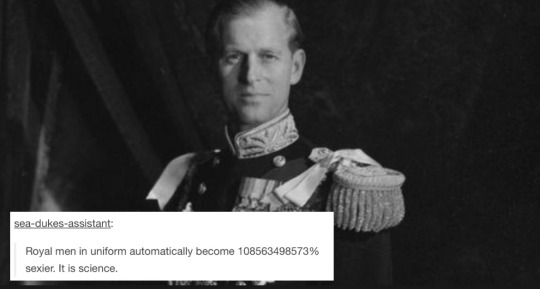


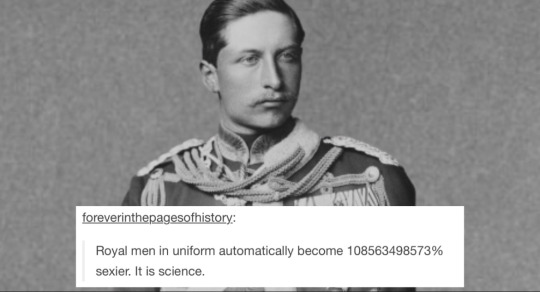


royal men + text post memes (insp.)
#i asked a few of my friends which royals they thought looked the hottest in uniform and was going to surprise some others#but some of my friends said the same person and i didn’t want to leave anyone out that also liked them#so i was gonna just make them all say duchessofvolterra but that’s boring so i’ll do more in the future to have all of my friends!#maybe i’ll try again with royal women in uniform#and give anne her own post ofc so i can misquote multiple fannes#king felipe vi#prince philip#prince william#prince of wales#tim laurence#crown prince frederik#kaiser wilhelm ii#prince carl philip#spanish royal family#british royal family#danish royal family#swedish royal family#scandinavian royalty#prussian royal family#glowingatdawn#sea-dukes-assistant#leonisandmurex#abigaaal#foreverinthepagesofhistory#world-of-wales#sophiebernadotte#royal fandom#text post memes#my edit#my gifs
197 notes
·
View notes
Text
" Time is change so much 😞 "
9 notes
·
View notes
Text
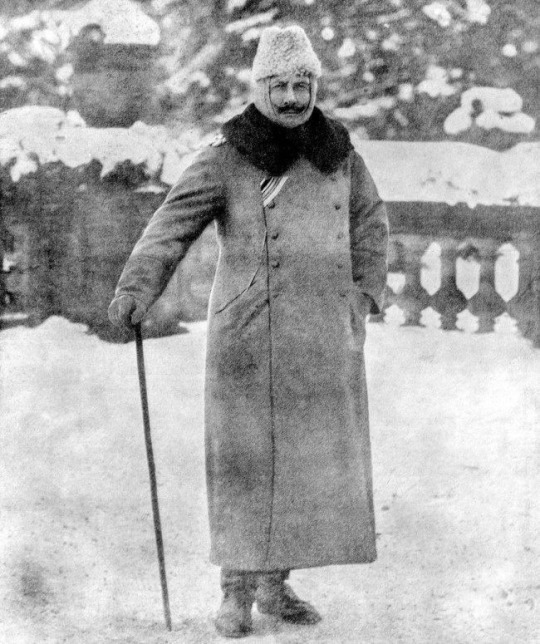
pov my mom wrapping me up when I was like 5 to go to playing with my friends in the snow during winter (photo credit to @thesmithslover2)
#kaiser wilhelm ii#I've cried a few times as she wrapped me up#I was a horrible child#He looks so goofy
17 notes
·
View notes
Text

#y’all know I mean good girl for Luise#or maybe good boy idk who knows her thoughts on gender#hohenzoller alignments#my take is that Willy only looks punchable because we know who he is#that’s why I made it like this#friedrich wilhelm iii#frederick william iii#frederick the great#old fritz#friedrich der große#luise von mecklenburg strelitz#queen louise of prussia#Friedrich Wilhelm i#kaiser wilhelm i#kaiser friedrich iii#kaiser wilhelm ii#history#prussia#history memes#prussian memes
26 notes
·
View notes
Text
I never thought I'd hear a robotic Kaiser Wilhelm on customs duty yelling SHNICKERZZZZ?? in a sci fi podcast but. here we are fjdhdhdhdjh
#creasing#only on the second episode but I adore this series already#I'm so gonna end up adding snickers yelled in a kaiser wilhelm voice to the dumb list of podcast quotes I reference constantly#i sound insane to anyone except my father (he's a bigger podcast nerd than I AM)#(it's great we quote startripper and midnight burger at each other regularly)#life with althaar#fiction podcasts#spiritheaded.text
13 notes
·
View notes
Text
you know, i just got back so im going to lose my marbles for 2 minutes so sit down and listen my friends because. i learnt what a hyperfixation is a few days ago and realized. ohhhhh. thats why this is happening.
all my friends, however, have these really cool hyperfixations. Like oh you're into this band? Oh you're completely obsessed with them and they've become a part of your personality as a whole? That's kinda cool because that band is cool and so you're cool, yeah? So. So why is MINE the assassination of franz ferdinand??? what the FUCK am i meant to do with this, Gods??? The gods (don't know enough to determine which but it was probably a mutual consensus) gave me this and went "this is going to be fun" but it'S NOT. ITS NOT. Because now, I have a bunch of random facts n trivia that NOBODY needs to know. And sometimes I can't research too deep into it because a) where do I even start and b) my friends are going to ask questions!!!!!
so anyway if everyone wants the 99% true (i dunno it was late night when i was typing it) facts and trivia about WWI. Specifically the assassination. Oh and Wilhelm. ples tell me. Shrugs. I will probably end up posting new revelations. oh and some art :3
#what do i tag this#I actually share a birthday with Kaiser Wilhelm#he was also brain damaged#january 27th btw#also princip has. well. had an older brother#that's cool#i often forget mine exists#going to hope he doesn't have tumblr now
3 notes
·
View notes
Text
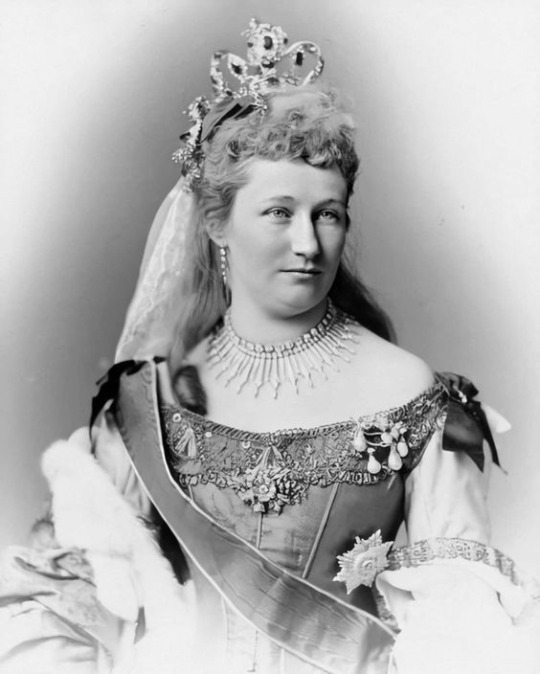
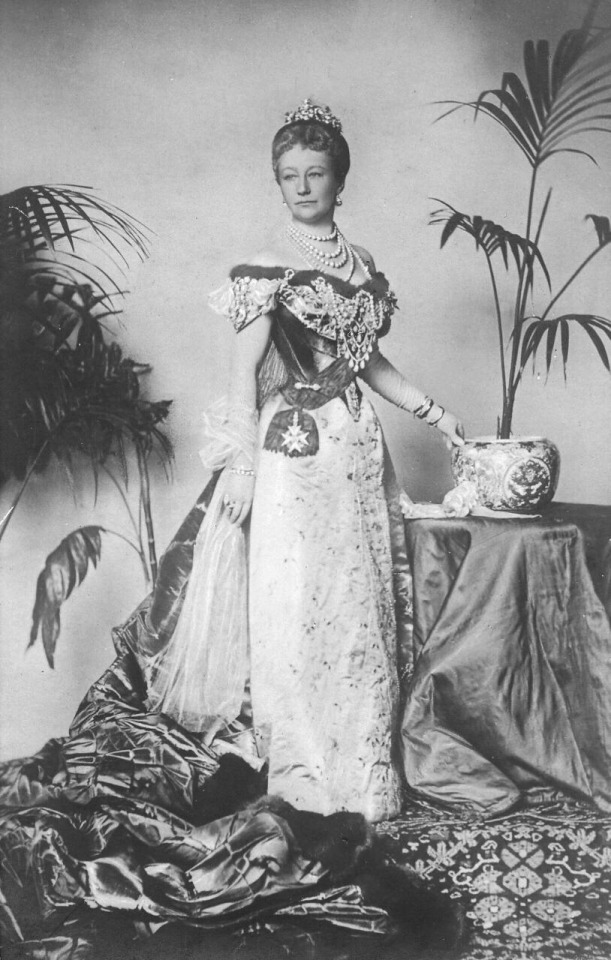
October 22 1858: The Birth of Kaiserin Augusta Victoria of Schleswig-Holstein
Augusta Victoria of Schleswig-Holstein was the eldest daughter of Frederick VIII, Duke of Schleswig-Holstein and Princess Adelheid of Hohenlohe-Lagenburg. Tragedy struck only a week after her birth when her elder brother died from illness. In 1860, her younger sister, Caroline Mathilda, was born. Who was regarded as prettier and a brighter personality than the chubby, serious, submissive Augusta Victoria. Soon Augusta’s mother would give birth to another boy, Gerhard, who died in infancy. Their next male heir and fifth child, Ernst Gunther, was a perfectly healthy baby boy. Augusta would have two other sisters, Louise Sophie in April 1866 and Feodora Adelaide in July 1874.
In her family, she was known affectionately as “Dona.” Augusta’s obedient nature was noted on early in her youth, even by her future mother-in-law Crown Princess Frederick. ‘It is strange how good some children are – and how little trouble they give,’ she wrote to her mother, Queen Victoria, when Augusta Victoria was nine years old. ‘Ada’s children are patterns of obedience, gentleness – the best of dispositions’. (1)
The thought of a match between Princess Augusta Victoria of Schleswig-Holstein and Prince Wilhelm of Prussia was contemplated ever since they were children, as noted by the prince (future Kaiser, ex-Kaiser) later in the future. But was never taken seriously until after the prince was rejected by Princess Elisabeth of Hesse and by Rhine. Perhaps, Wilhelm was seeking for a rebound in Dona and it was a success. As the couple married on the 27th of February 1881. The marriage has been regarded to be happy but not without struggle. As Wilhelm quickly grew bored at his new wife’s longing for a simple domestic lifestyle, having multiple affairs throughout the years. And in the beginning only saw Dona as a broodmare. It was only after an ear infection gone bad, where Augusta stayed by Wilhelm’s side throughout the duration of it did he start to see her in an adjusted light, but continued to be unfaithful to her.
She bore him seven children:
Wilhelm, German Crown Prince, Crown Prince of Prussia (1882-1951)
Prince Eitel Friedrich (1883-1942)
Prince Adalbert (1884-1948)
Prince August Wilhelm (1887-1949)
Prince Oskar (1888-1958)
Prince Joachim (1890-1920)
Princess Viktoria Louise of Prussia (1892-1980)
Her days as Empress, she was regarded by the court as a prudish, a stickler for rules who punished anyone for the simplest gesture she deemed to be “immoral.” She was deemed by many as unremarkable and plain with a gaudy and tacky sense of fashion. With Nicholas II remarking to his mother, the Dowager Empress. That she ‘did her best to be pleasant but looked awful in sumptuous gowns completely lacking in taste; in particular the hats she wore in the evening were frightful.’
Though as overbearing and a nuisance as she was in public life and a part of her private life, by some family members, such as Empress Frederick (with whom she had a very heated feud with and who Augusta enjoyed snubbing frequently) who wrote to her daughter, Sophie, she was characterized as: ‘very grand and stiff and cold and condescending at first, but became much nicer afterwards. Perhaps it was also partly shyness.’ and by her younger sister, Louise Sophie that when she was ‘not bowing to the will of her autocratic husband she was easy and indulgent’. “Her cousin Alice of Albany, who was sometimes mildly critical of her older relations, found her ‘most affable and kind’.”(1)
She was her husband’s biggest supporter throughout everything (for better and for worse) and was crushed when she was stripped of her titles as German Empress and Queen of Prussia after the war. Her health, which was already declining ever since the 1890s (causing her to miscarry twice) went down a rapid decline in the 1920s. And it had worsened when she had heard of the news of the death of her youngest son, Prince Joachim. She passed away on the 11th April 1921, in spite of her personal flaws, she was a beloved Empress by the German people and her popularity outshined her husband’s. Thousands lined up to see her off, where she would be buried at the Temple of Antiquities in the gardens near the New Palais in Postdam. Her husband, the ex Kaiser Wilhelm II was forbidden to cross into Germany to see his wife off for the final time.
Her room in Huis Doorn was soon turned into a shrine dedicated to the late Empress. With Wilhelm ordering for the room to regularly be cleaned with flowers and a cross draped over the bed. “Once a week, for the rest of his twenty years, he would retire there on his own, to go and mourn her memory.“ (1)
Wilhelm adhered to his late wife’s wishes for him to marry someone else when she was gone. When only a year later he would marry Princess Hermine of Reuss. He passed away in June of 1941, at age 82, 20 years after her passing.
Source : The Last German Empress
#monarchy#kaiser wilhelm ii#german empire#german monarchy#imperial germany#wilhelm ii#kaiserin augusta victoria#empress augusta victoria#royal birthdays#THIS TOOK ME AN HOUR😭#and her bday is about to end in 8 minutes#i was hella procrastinating lmao#happy birthday to Dona ig#german royalty#german royal family
48 notes
·
View notes
